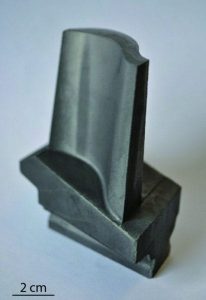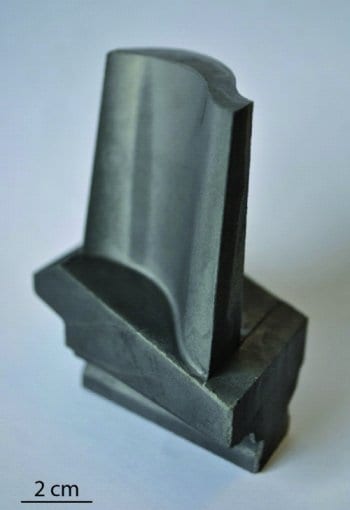 Due to increased demands for longer range, greater endurance and improved durability aircrafts, and due to further regulation in terms of noise and greenhouse gas emissions, there is a strong need to develop cleaner and more efficient engines, which require technological advances in the thermal and mechanical properties of high-performance materials. TiAl intermetallic materials with low density are in the process to replace nickel-based superalloys owing to their excellent high-temperature propertie. However, the currently cast processing route for TiAl is limited by the fact that substantial machining is required. Moreover, casting defects are difficult to remove, thus leading to materials with unsatisfactory mechanical properties.
Due to increased demands for longer range, greater endurance and improved durability aircrafts, and due to further regulation in terms of noise and greenhouse gas emissions, there is a strong need to develop cleaner and more efficient engines, which require technological advances in the thermal and mechanical properties of high-performance materials. TiAl intermetallic materials with low density are in the process to replace nickel-based superalloys owing to their excellent high-temperature propertie. However, the currently cast processing route for TiAl is limited by the fact that substantial machining is required. Moreover, casting defects are difficult to remove, thus leading to materials with unsatisfactory mechanical properties.
A group of researchers in France has shown how to produce TiAl turbine blades through an alternative and cost-effective manufacturing route, i.e. Spark Plasma Sintering (SPS). This technique consists of heating up the powder sample using high-intensity pulsed current. Full densification of the sample is achieved via Joule’s effect in a matter of seconds. Due to the limited solid-state diffusion resulting from the rapidity of the processing cycle, fine microstructures, and thus original materials, can be obtained.
A main objective in the production and use of TiAl turbine blades is to ensure a good balance of properties. For this purpose, the French researchers developed a novel TiAl alloy with enhanced mechanical properties. Creep rates and lifetime are enhanced by at least one order of magnitude for the IRIS alloy with respect to the one used in the engines.
The second innovation of this work consists in near net shaping blades using SPS. The challenge in the design for this brittle material lies in the complexity of blade geometry with a slim foil and a thick root. It is noteworthy that the complex part can be obtained in a single run and without subsequent thermal treatments. Other areas of research could also benefit from these developments on intermetallic alloys, such as complex parts in ceramic materials.

















